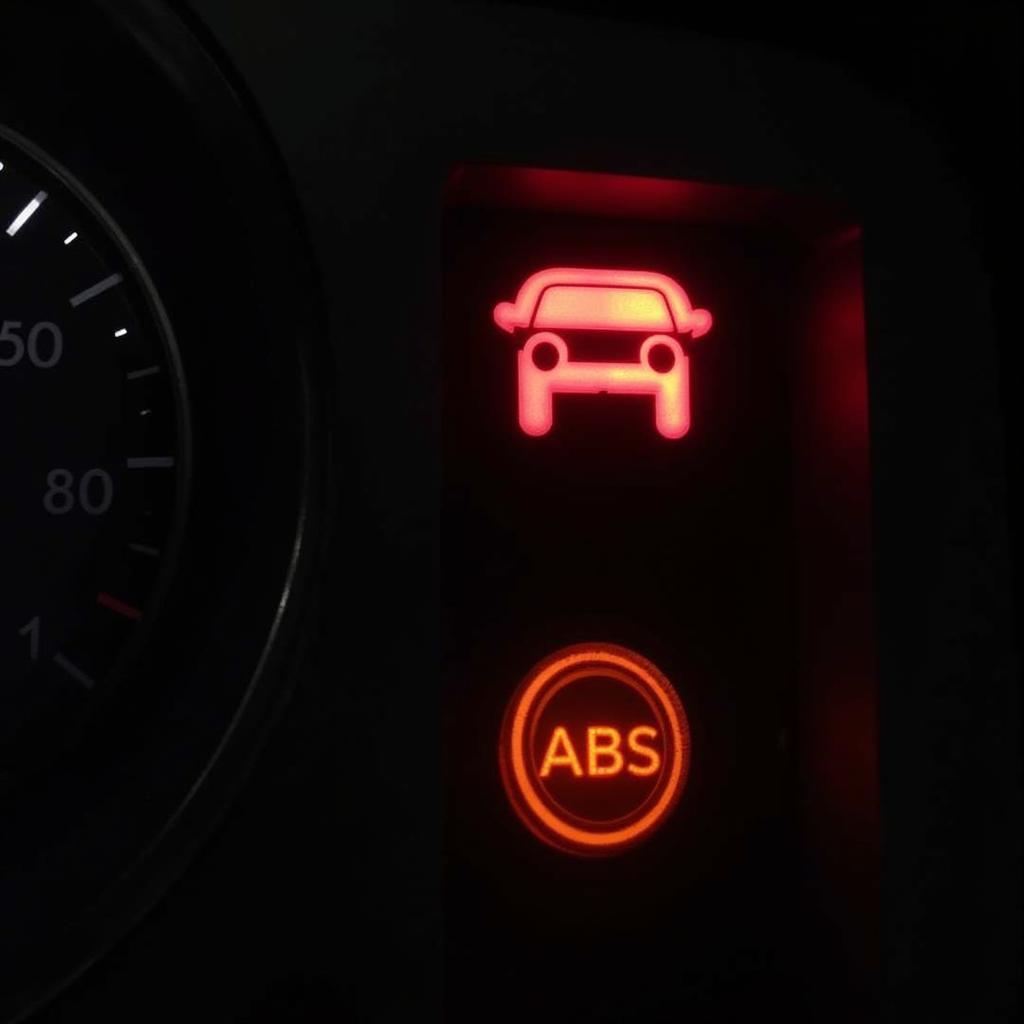Seeing a “Hybrid System Warning Check Brake” message flash across your dashboard can be alarming. This warning, common in many hybrid vehicles, signifies a potential problem within your car’s complex hybrid system, specifically related to the braking system. While it might seem daunting, understanding the potential causes and solutions can empower you to address the issue effectively.
Understanding Your Hybrid Braking System
Hybrid vehicles utilize a unique braking system called regenerative braking. Unlike conventional vehicles that solely rely on friction to slow down, hybrid cars capture energy generated during braking and convert it into electrical energy to recharge the hybrid battery. This intricate process involves a sophisticated interplay between traditional hydraulic brakes and electric motors, all managed by a central control unit.
Decoding the “Hybrid System Warning Check Brake” Message
When the “Hybrid System Warning Check Brake” alert appears, your car is signaling a potential malfunction within this intricate braking system. While it doesn’t necessarily mean a complete brake failure, it’s crucial not to ignore it.
Potential Causes of the Warning
There are several reasons why you might be seeing this warning message:
- Brake System Issues: Problems with the traditional hydraulic brake components, such as low brake fluid, worn brake pads, or a faulty brake sensor, can trigger the warning.
- Hybrid Battery Problems: A malfunctioning hybrid battery or a problem with its charging and discharging system can disrupt the regenerative braking process, leading to the warning.
- Control Unit Malfunction: The central control unit, responsible for managing the hybrid system, could be experiencing software glitches or sensor errors, triggering the alert.
- Wiring and Connector Issues: Loose or corroded wiring and connectors within the hybrid system can interrupt communication signals and lead to various warning lights, including this one.
Troubleshooting the Warning
Before you panic, there are a few things you can check yourself:
- Check Your Brake Fluid: Ensure the brake fluid reservoir is full and within the recommended level. Low brake fluid can indicate a leak and needs immediate attention.
- Inspect Your Brake Pads: Visually check your brake pads for wear. If they appear thin, it might be time for a replacement.
- Restart Your Vehicle: Sometimes, a temporary software glitch can trigger false warnings. Restarting your car might reset the system and clear the message.
When to Seek Professional Help
If the warning persists despite your initial checks or you notice any unusual braking behavior like grinding noises, pulling to one side, or a soft brake pedal, it’s essential to seek professional help immediately.
Remote Diagnostics and Software Solutions
Modern vehicles, especially hybrids, heavily rely on software and electronic systems. In many cases, the “Hybrid System Warning Check Brake” issue might stem from a software bug or a sensor malfunction. This is where remote diagnostics and software solutions come into play.
Here’s how it works:
- Connecting Your Vehicle: Using specialized equipment, qualified technicians can access your vehicle’s onboard computer system remotely.
- Pinpointing the Issue: Through sophisticated diagnostic software, they can read error codes, analyze system data, and accurately pinpoint the root cause of the warning.
- Software Updates and Programming: In many instances, a simple software update or reprogramming can resolve the issue. Technicians can upload the necessary updates remotely, eliminating the need for extensive disassembly or part replacements.
Benefits of Remote Diagnostics and Software Solutions:
- Faster Diagnosis: Remote diagnostics can often identify problems much faster than traditional methods, saving you valuable time and potentially avoiding unnecessary repairs.
- Cost-Effective: Software-related fixes are usually more affordable than replacing physical components.
- Convenience: Remote diagnostics and software updates can be performed at your location, eliminating the need to visit a repair shop.
Finding a Qualified Remote Diagnostics Provider
It’s crucial to choose a reputable and experienced provider for remote diagnostics and software services. Look for certifications and expertise in hybrid vehicles.
Preventing Future Issues
Here are some preventative measures:
- Adhere to Scheduled Maintenance: Regular maintenance checks for your hybrid system, including brake inspections and fluid changes, can prevent many issues.
- Monitor Your Dashboard: Pay attention to any warning lights and address them promptly.
- Choose Qualified Technicians: Opt for technicians specializing in hybrid vehicle repair and maintenance.
Conclusion
The “Hybrid System Warning Check Brake” message should not be ignored. While initial checks might help, seeking professional help is crucial for accurate diagnosis and repair. Remember, remote diagnostics and software solutions offer a faster, cost-effective, and convenient way to address many hybrid system issues. By understanding your car’s technology and taking proactive steps, you can ensure a safe and smooth driving experience.


